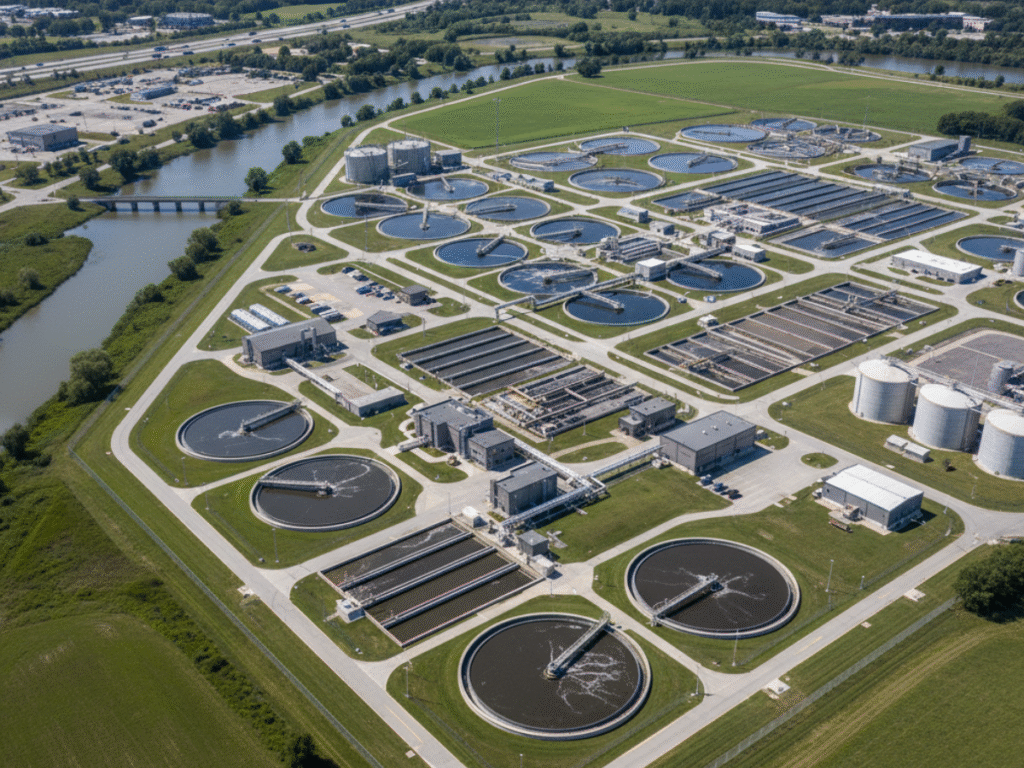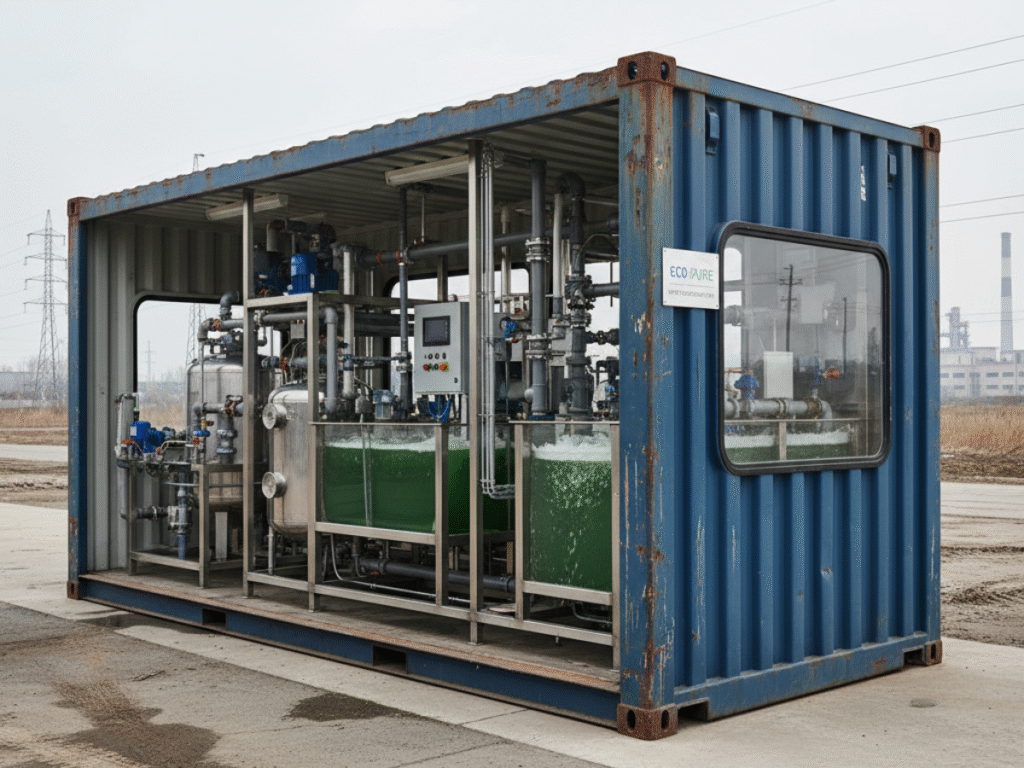1. Preliminary Treatment – Screening and Grit Removal
The first step in the process is simple but crucial. Large objects that could damage pumps or clog pipes — like rags, sticks, plastics, and stones — are removed.
Processes involved:
- Screening: Metal bars or fine mesh screens trap large debris.
- Grit removal: Heavy inorganic materials like sand, gravel, and broken glass settle out in grit chambers.
This step protects downstream equipment and ensures smooth operation in later stages.
2. Primary Treatment – Sedimentation and Sludge Formation
After preliminary treatment, the wastewater flows into large primary sedimentation tanks. Here, the flow slows down, allowing suspended solids to settle to the bottom as primary sludge, while oils and grease float to the top and are skimmed off.
Key outcomes:
- Removes about 50–60% of suspended solids
- Reduces 30–40% of biochemical oxygen demand (BOD)
At this stage, the wastewater looks clearer, but it’s still loaded with dissolved organic matter and microorganisms.
3. Secondary Treatment – Biological Degradation
Secondary treatment is where nature’s own microorganisms become the heroes. In this stage, bacteria and other microbes feed on the organic pollutants, converting them into harmless by-products like carbon dioxide, water, and additional biomass.
Common Biological Processes:
- Activated Sludge Process (ASP): Air (oxygen) is bubbled through large aeration tanks, stimulating microbial growth.
- Trickling Filters: Wastewater is sprayed over beds of stones or plastic media coated with biofilm that digests pollutants.
- Rotating Biological Contactors (RBCs): Discs rotate through wastewater, allowing microorganisms to thrive on their surfaces.
After aeration, the mixture (called mixed liquor) moves to secondary clarifiers where the biomass settles as activated sludge.
4. Tertiary Treatment – Advanced Purification
Tertiary treatment further polishes the water to remove remaining nutrients, pathogens, and fine particles. This step ensures the treated water is safe for discharge or reuse in irrigation, industry, or even groundwater recharge.
Processes include:
- Filtration: Sand filters or membrane systems remove residual suspended solids.
- Disinfection: Chlorination, UV irradiation, or ozonation kills pathogens.
- Nutrient removal: Biological or chemical methods remove nitrogen and phosphorus.
Tertiary treatment produces water that’s remarkably clear and often indistinguishable from natural water sources.
5. Sludge Treatment and Disposal
The sludge collected from primary and secondary clarifiers is thickened and stabilized through processes like anaerobic digestion, which breaks down organic matter to produce biogas (a renewable energy source).
After digestion, the sludge is dewatered and can be safely disposed of, used as fertilizer, or further processed into biosolids for beneficial use.





